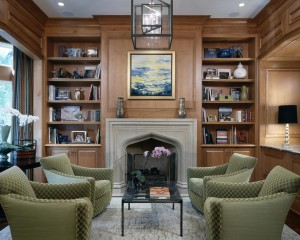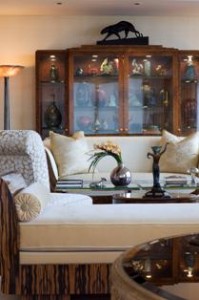
For the Designer
Clients usually don’t want to be told what to put in their house as an accessory, so the designer should start off with a discussion about what the client has and what they want to accessorize with, find out what their interests are and add that to the accessory scheme. Some clients simply don’t know what to do and don’t know what to spend, so discuss this and create a budget so they don’t worry throughout the process…if you can incorporate this in the overall project and accessorize as you go this may help your client to bring you into the process.
If you discuss art books, candles and candle snuffers, orchids and containers, plants, etc. this will help start the subject of accessories. Listen to what the client says in response, but let them know your thoughts when you select a piece of furniture — that this would look wonderful with “this or that†item on that piece or how this accessory would “make†the room appear more finished. Discover something they already have or something you think would be perfect for them and discuss the costs of this portion of the project and have them set a budget so you can find some pieces along the way…be clever, not expensive, so they see this aspect of the project is not so daunting. I had a client who inherited a lot of Asian artifacts during the middle of the project and he did not want to display them all nor did he want to get rid of them, so we created a small display area for a few items, but built hidden storage behind the display area, so he can change his collection several times a year…this allows him to enjoy the entire collection, but not all at once which would be too overwhelming.
Some clients don’t have any idea of what they have or what they need, so ask to see their dishes and glassware, table settings, placemats, etc. and ask if they intend to use these or are they looking to augment their collections. If they have something they like to collect, ask them where they want to display these pieces and direct them to the right setting. Often clients want to accessorize with photos of family trips and memories, so I usually direct them to put those items in a family place such as a master bedroom corridor or study, or a family space such as a game room.
Often, a client will put out something that is totally out of character or is really awful…instead of overreacting, simple let them know this is not the same quality as the furnishings they have now, and maybe find a place more suited to the piece they purchased. When I photograph a project, I often put things away because they won’t photograph well or are simply not necessary for the photo. I have brought in paintings, plants, etc. and usually when I do, the client sees their home as I had envisioned it for them and they see what I had meant all along. While they may not want to keep the items I bring in for a photography session, it can’t hurt to allow them to see something wonderful in place of the items they put together.
For the Client
Fear of discussing such a personal aspect of a project could ruin the entire look, so be brave and tell your designer your thoughts and listen to what they say in reply…you may be better off putting Aunt Betty’s purple vase away and using it in the spring for those spring bouquets — which would be more appropriate anyway.
For a client to say this to a designer is really a bit insulting….you can do my home, but I’m going to finish it without you…your designer needs to be involved in this arena so your home works with your artwork. If you don’t have any, determine with your designer what can be brought in, or maybe learn about art with your designer and you may be surprised to learn what you actually like. It’s a bit like clothing…buy the belt and shoes along with the pants, shirt and jacket so you will have a completed outfit and then bring in the accessories. Accessorizing usually brings in the final touches that make a project, so whether it is inexpensive or costly, it reflects your tastes but your designer can make it appear beautiful and you might see your old possessions in a new light.
